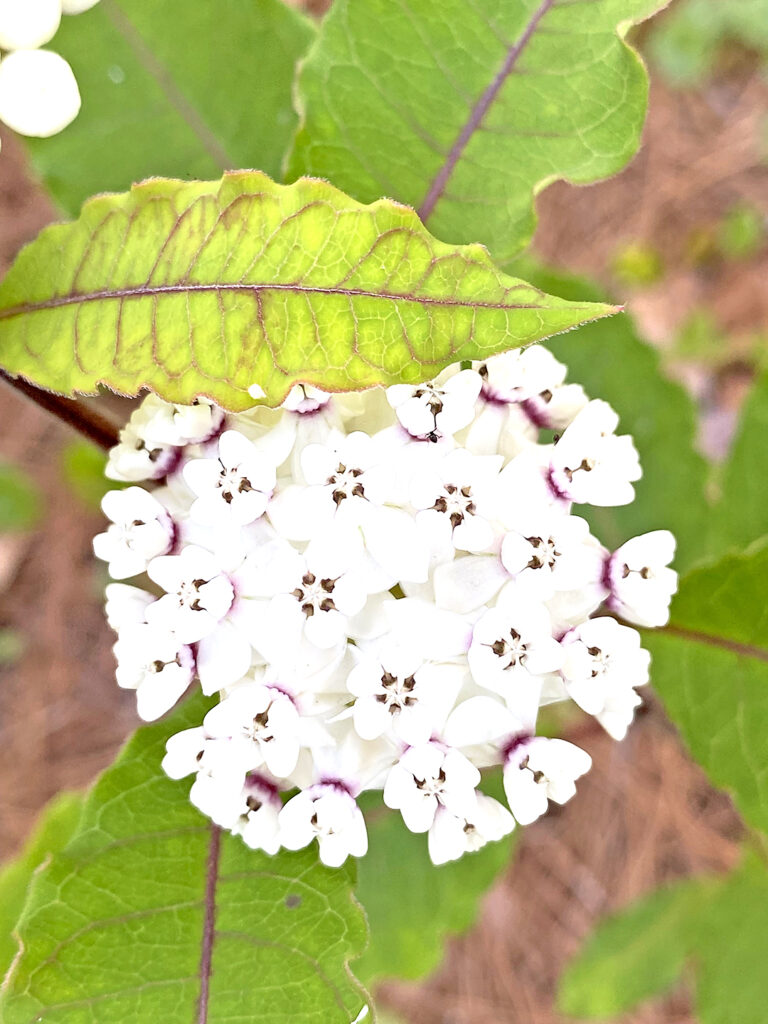Redring milkweed

By LYNN ARTZ, SANDY TEDDER and DAVID RODDENBERRY
In early summer, redring milkweed (Asclepias variegata) displays its stunning snowball-like clusters of 15-30 small white flowers, each with a vibrant red-purple ring at the base. The fragrant flowers produce abundant nectar attracting butterflies, long-tongued bees, flies, and wasps. Adult monarchs will feed on the nectar but redring milkweed is not an important food plant for monarch caterpillars. The leaves may feed the caterpillars of tussock moths. Like most milkweeds, the stems have a milky white sap and the roots are deep, helping the plants survive fires and droughts. Found in open woodlands and wood edges, redring milkweed prefers part sun and dry soil. It grows to 1-3 feet tall and wide. Planted last fall in Sopchoppy Depot Park, a dozen redring milkweed are massed at the wood’s eastern edge.


